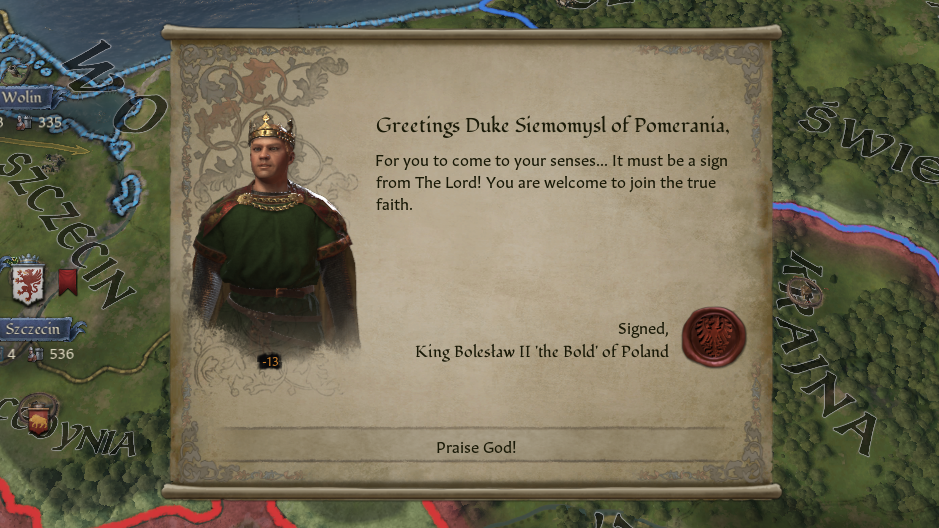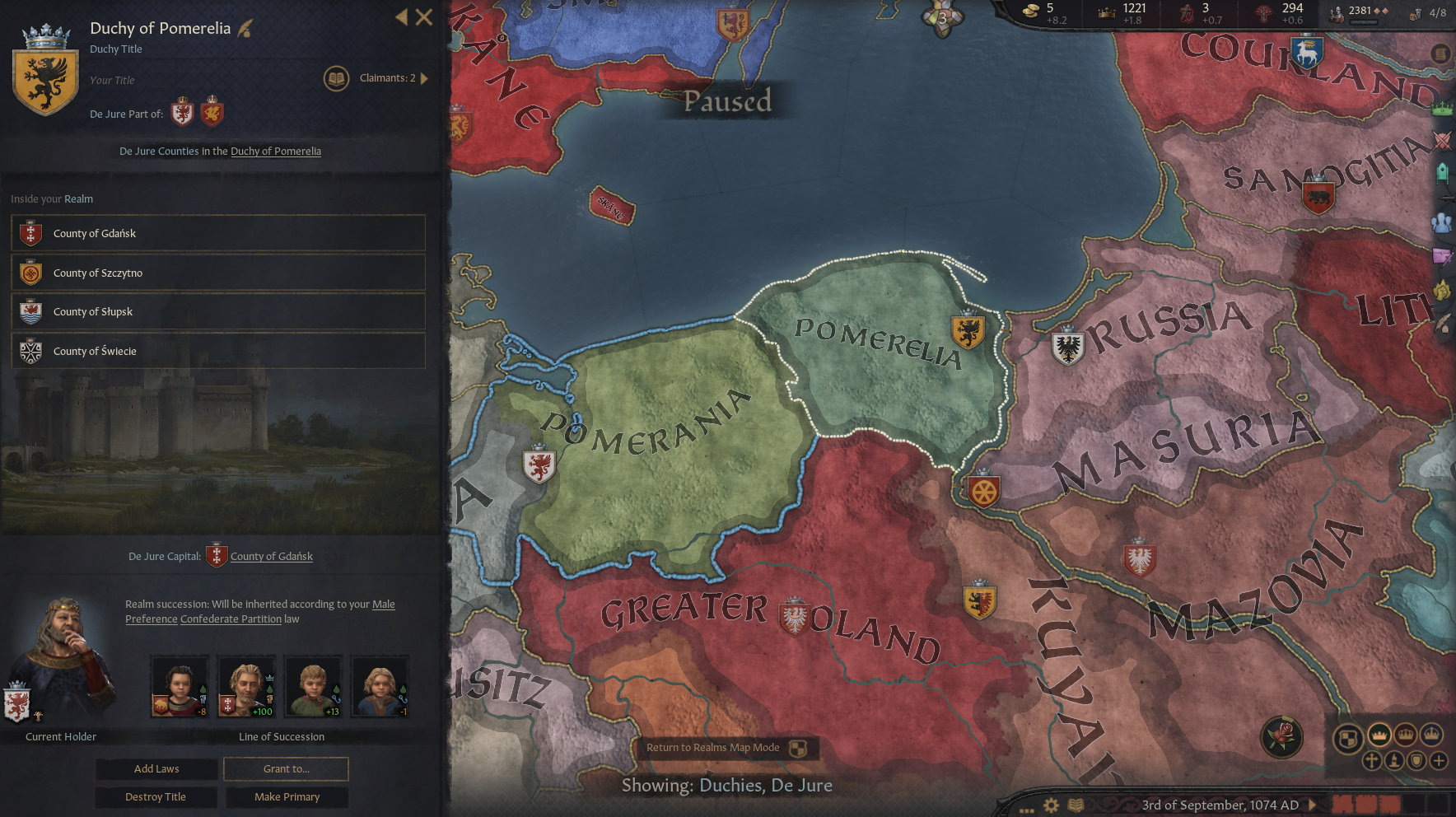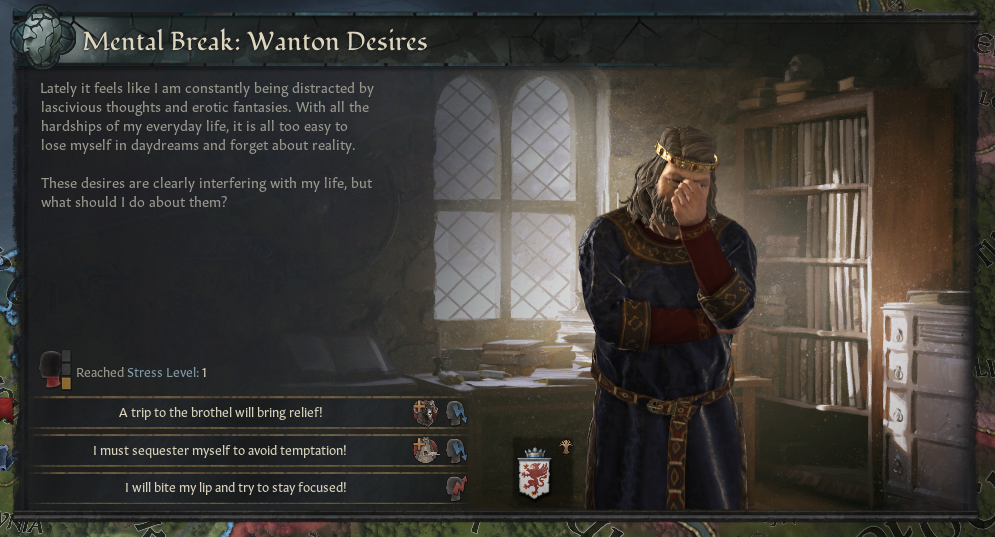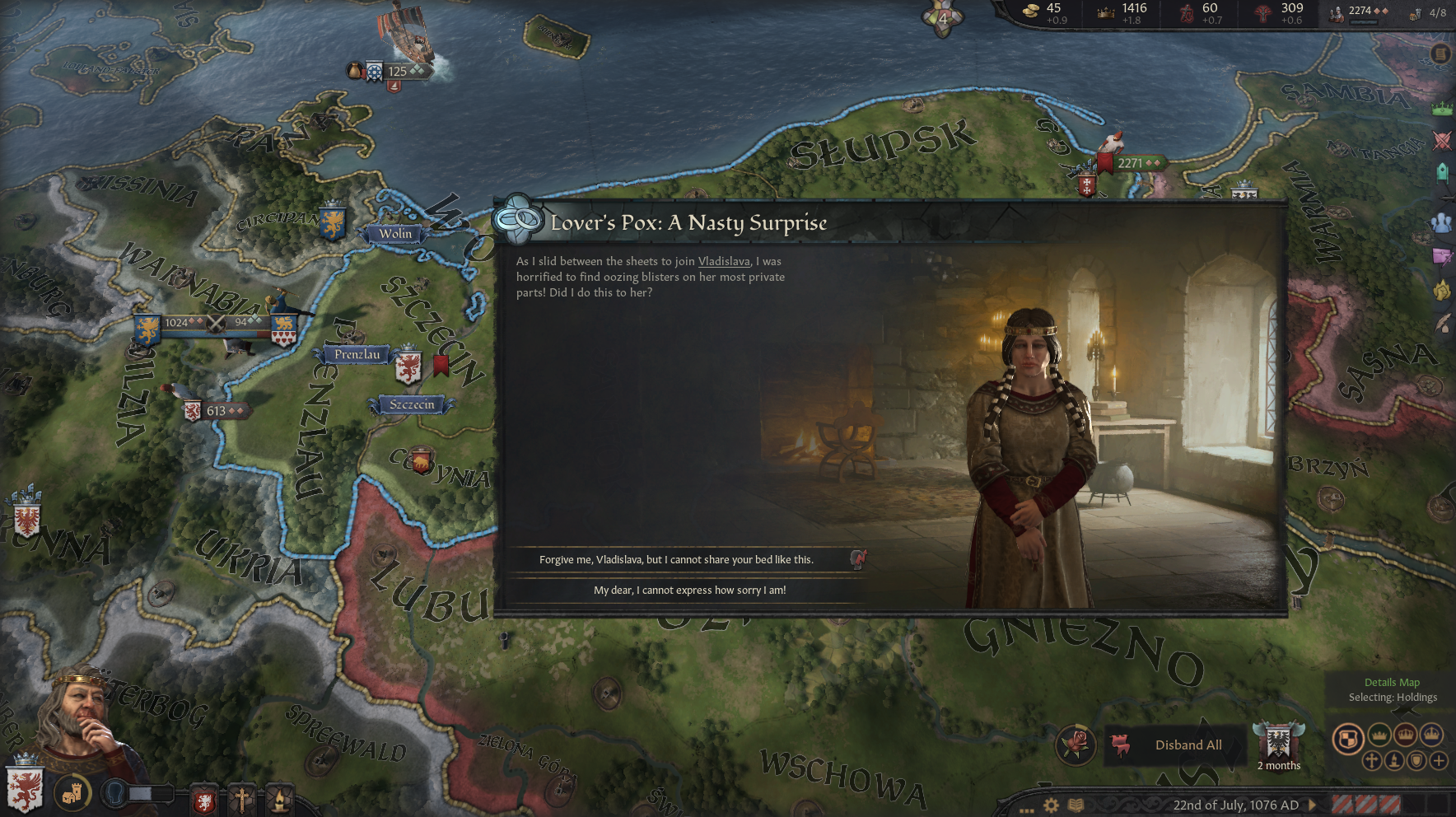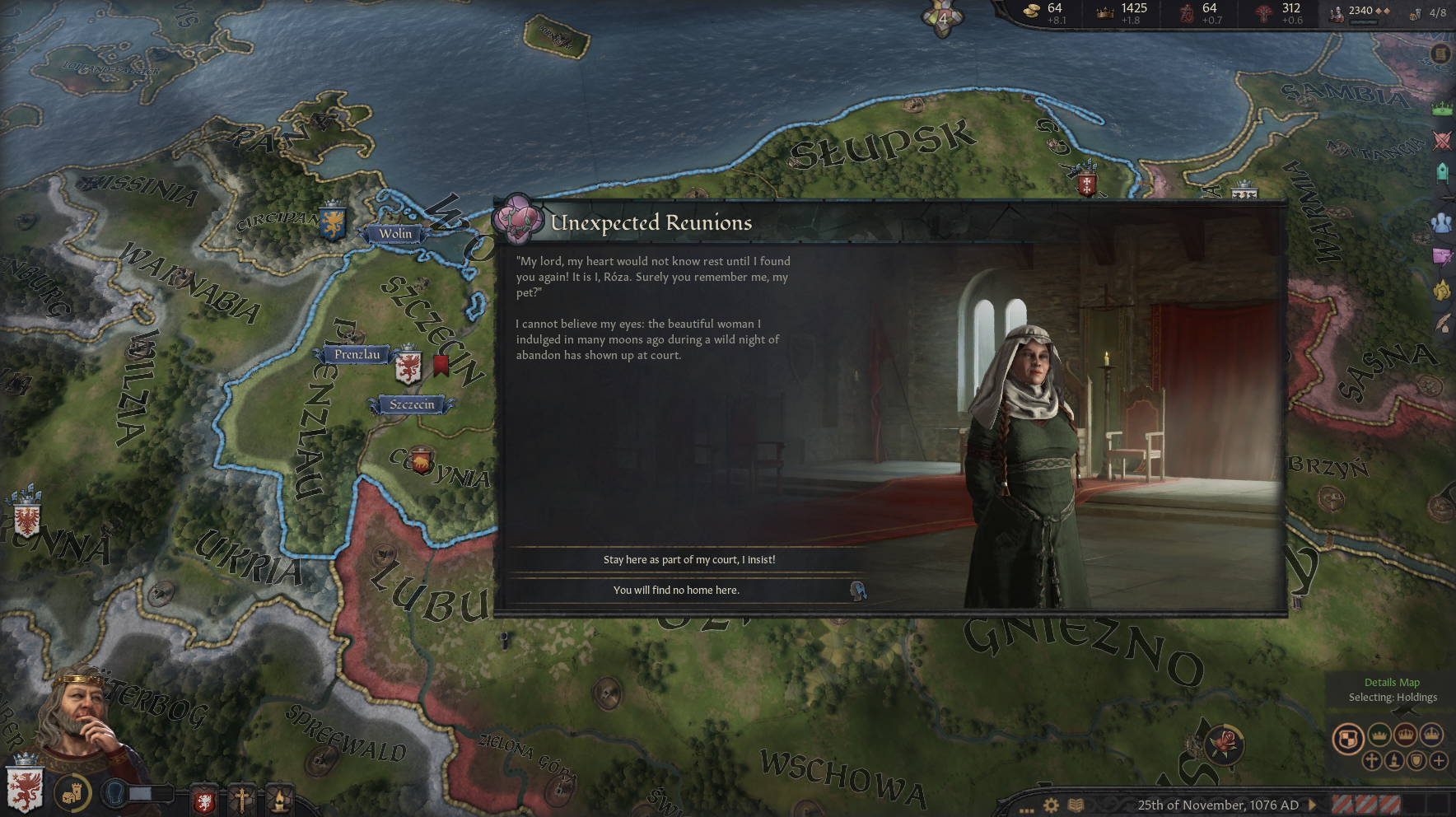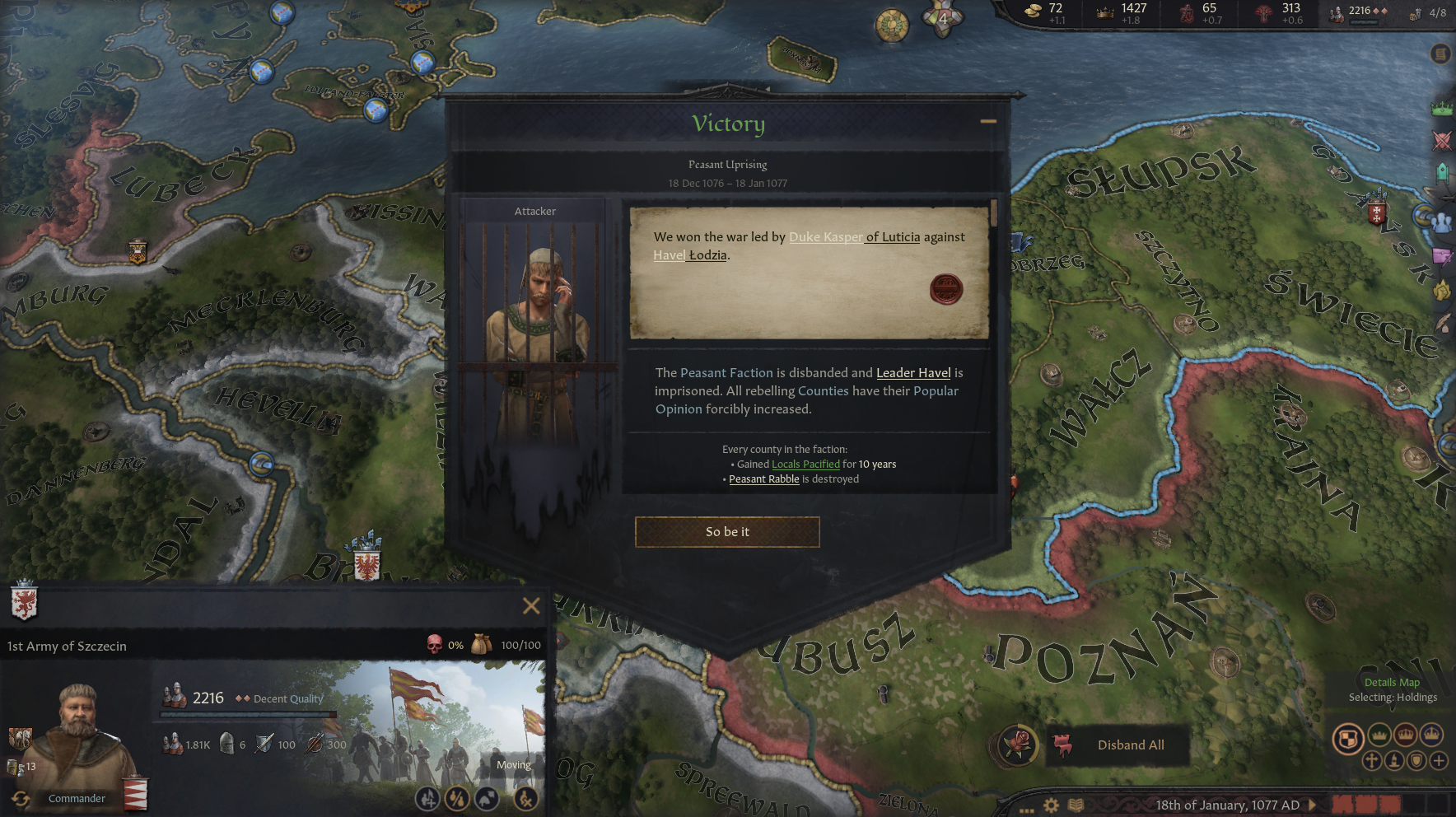The Griffins IV: Lover's Pox
There is peace in the land, but not in the bedchamber, as Duke Siemomysl of Pomerania decides to distract himself from the stress of designing new aqueducts in the brothel. And promptly contracts a nasty venereal disease.
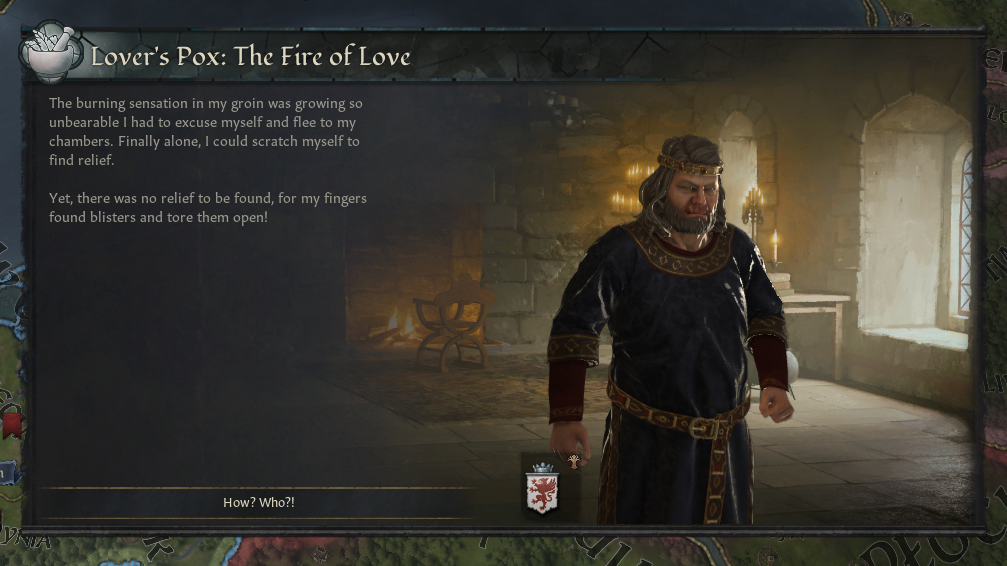
After having, against his personal convictions, converted to Catholicism, Duke Siemomysl of Pomerania hopes his country can now live in peace with its neighbours. And for a few years, there is actually peace in the surrounding regions. His plan seems to have worked – for now.
We return to the court of the king in January of the Year of Our Lord 1074. Diverting himself from his duties as a statesman at a local jousting tournament, Siemomysl becomes friends with Mayor Dobromil of Koszalin. The two of them hit it off while waiting for the tournament to start and discover, that they enjoy talking to each other a lot.
A few months later, Siemomysl decides to designate Bishop Artucán, the head of the Catholic church in Pomerania, as the guardian for his six year old daughter, Ludmila. This, together with the subtle influence exerted by Siemomysl’s spymaster, has the desired effect: Bishop Artucán now endorses his duke. Thus, Siemomysl’s conversion to Christianity is complete and the monetary tribute starts flowing from the church holdings once more.
On the 3rd of September, 1074 AD, Duke Siemomysl creates the Duchy of Pomerelia by splitting off the counties of Gdańsk, Szczytno, Słupsk and Świecie from the Duchy of Pomerania. This is a momentous occasion and the first such change in the Pomeranian titles in many, many decades. Siemomysl is now Duke of Pomerania and Duke of Pomerelia. Observers at court believe, Siemomysl is preparing to make himself king of Pomerania, for which he would need to hold more than one duchy title.
On the 17th of January, 1075 AD, at the Battle of Ceklis, High Chieftain Milzas of Prussia is taken prisoner by High Chieftain Kukovaitis of Samogitia. They were fighting over the Chiefdom of Memel in Kukovaitis’ territory and Milzas lost the battle and the war. Siemomysl hopes this means an end to Prussia’s aggressive behaviour on his eastern border. Even if this respite is only temporary, it would be a boon to the Pomeranians.
In that same month, Siemomysl undertakes an irrigation project in the County of Prenzlau and tries to design an aqueduct. Many voices at court doubt the Duke can do anything of the sort, but the old man will not be swayed from his idea. A few weeks later, news reach the court that the aqueduct project in Prenzlau is hopelessly over budget. Despite Siemomysl putting his treasury in dire straits by continuing, he refuses to give up. Naysayers start calling the project “Siemomysl’s Folly” behind his back.
In May of 1075 AD, Siemomysl has to step in to finish the irrigation project himself, as apparently everyone else is completely incompetent. Since he’s naturally a lazy person, this causes him considerable stress. However, “Siemomysl’s Folly” is completed and the new aqueduct in the County of Prenzlau is opened in July.
Unfortunately, Siemomysl suffers from a mental break because of this stressful situation. He decides to visit the brothel to alleviate some of the pressures. His frequent trips to the brothel do not go unnoticed and rumours start to fly. Siemomysl develops a reputation for being quite rakish. To make matters worse, the Duke catches the Lover’s Pox disease. His genitals break out in blisters that cause an unbearable itching. Nothing seems to bring relief.
In February of 1076 AD, the shortlived peace at the Prussian border once again collapses in on itself. High Chieftain Milzas is back. Another one of his raiding parties attacks Gdańsk. In reply, Siemomysl raises all levies in Słupsk to go on a counter attack. At the Battle of Gdańsk, on the 12th of March, 1076 AD, Commander Wawrzyniec manages to defeat High Chieftain Milzas. Councillor Lucjan, the Mayor of Kamień, is killed during the battle. Which means Siemomysl needs a new steward. He decides to reward his knight Wawrzyniec, who recently defeated the Prussian raiders at the Battle of Gdańsk with the title of steward.
On the 18th of June, 1076 AD, at the Battle of Toruń, High Chieftain Milzas of Prussia is taken prisoner by King Bolesław of Poland. Bolesław wins the holy war for the Chiefdom of Chełmno. It seems Milzas never learns. Siemomysl believes the old bastard will never let go of his belligerent ways, no matter how often he is captures. Will there ever be peace on the eastern border? Probably not.
Suddenly, Siemomysl’s past indiscretions are coming back to bite him. In July of 1076 AD, he discovers that his wife Vladislava has also contracted the Lover’s Pox. At least Siemomysl recognises it’s his fault and shows some backbone. He continues to share her bed. Then, in November, one of Siemomysl’s old affairs shows up at court. With all the troubles going on in his personal life, this is the last thing he needs right now. He kicks her out of his court.
On the 22nd of December, 1076 AD, a peasant revolt breaks out in Cedynia. It looks like Count Szczęsny, who is now nine years old and rules the county, has his work cut out for him. At first Siemomysl isn’t worried, but then reports come in from other holdings: The peasant revolts are spreading!
Duke Kasper of Luticia, who is also having trouble with an uprising, asks Siemomysl to join in his efforts to put the revolt down. Siemomysl accepts, of course, and raises his levies. He aims to put the pesky farmers in their place. On the 18th of January, 1077 AD, the peasant revolt is finally put down. For good, it looks like.

